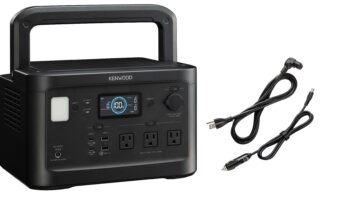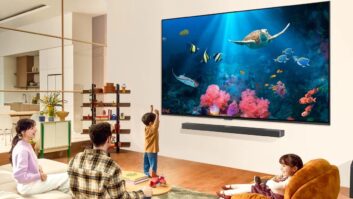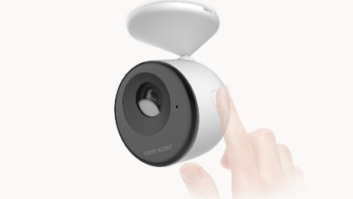In a sign that flat-panel TV sales should continue to escalate significantly over the several years, a recent consumer study conducted for Hitachi Home Electronics America found that seven in 10 U.S. adults either own or want to own a flat-panel TV.
The nationwide “random digit dial” telephone survey was conducted for Hitachi by KRC Research between May 18 and 21, and reached 1,055 adults, age 18 and older. The margin or error was said to be ±3.0.
The study found that one in five American consumers (19 percent) already own a flat-screen television, and an additional 52 percent are interested in purchasing one (71 percent own or want to own a flat panel).
The following subgroups are more likely to already own a flat-panel television:
- incomes greater than $50,000 (30 percent) vs. incomes less than $50,000 (9 percent);
- households with children (24 percent) vs. households without children (16 percent);
- men (23 percent) vs. women (16 percent);
- metro area residents (21 percent) vs. non-metro area residents (13 percent); and
- Hispanics (26 percent) and Caucasians (20 percent) vs. African Americans (9 percent).
Among those interested in buying a flat-panel TV the study found the following:
- consumers with incomes greater than $50,000 (70 percent) vs. incomes less than $50,000 (49 percent).
- households with children (63 percent) vs. households without children (53 percent);
- African-Americans (68 percent) vs. Caucasians (54 percent); and
- adults younger than 65 years old (61 percent) vs. seniors 65 years old and older (37 percent).
The study also found that “when it comes to buying a new television, bigger is better.” American consumers now aspire to own 50-inch and 60-inch screens.
Nearly two in three consumers (64 percent) looking to buy a television are likely to purchase a larger television than the one that they currently have.
The following subgroup breakout shows the level of interest in buying a big-screen set:
- households with children (74 percent) vs. households without children (58 percent);
- those with incomes greater than $35,000 (71 percent) vs. incomes less than $35,000 (59 percent); and
- adults younger than 65 years old (68 percent) vs. seniors 65 years and older (38 percent).
If cost was not a factor, a plurality of American consumers say that they want a television 50 inches or larger diagonally (37 percent), compared with 23 percent who would want a 42-inch television and 35 percent who would want a 35-inch TV or smaller.
The following subgroups are more likely to be interested in a TV with a 50-inch or 60- inch screen:
- men (43 percent) vs. women (32 percent); and
- adults age 18 to 24 (55 percent) vs. 25 to 34 (47 percent) vs. 35 to 44 (41 percent) vs. 45 to 54 (36 percent) vs. 55 to 64 (31 percent) vs. 65 and older (15 percent); and
- households with children (47 percent) vs. households without children (31 percent).
In selecting a new television, six in 10 Americans said picture quality is the most important factor when price is not a factor. The second-most important factor was brand (most important to 11 percent) and screen size (9 percent).
If purchasing a new TV for their home, more than three in four American consumers (78 percent) are interested in purchasing a television with HDTV capability and half (52 percent) are very interested.
The following subgroups are more likely to be interested in HDTV:
- those with incomes greater than $35,000 (85 percent interested) vs. income less than $35,000 (69 percent); and
- adults younger than 65 years old (81 percent) vs. seniors age 65 and over (60 percent).
Despite an interest, most American consumers are uncomfortable explaining HDTV technologies, the study found.













